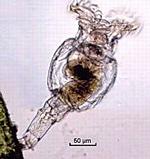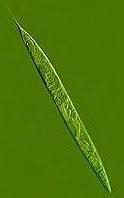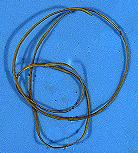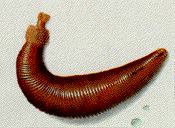
(rotifer) |

(nematode worm) |
ASCHELMINTHES*
(='Pseudocoelomate' phyla) (A grouping of convenience;
|

(nematomorph worm) |

(priapulid worm) |

(rotifer) |

(nematode worm) |
ASCHELMINTHES*
(='Pseudocoelomate' phyla) (A grouping of convenience;
|

(nematomorph worm) |

(priapulid worm) |
= = ==C== (branch uncertain) ==== Cycliophora ("small-wheel bearer"; newest phylum)
===3=============== Rotifera (rotifers= "wheel bearers")
=====2========|
? ===4=============== Acanthocephala (spiny headed worms)
?
?================5=============== Gastrotricha (gastrotrichs, hairy-belly worms)
?
<<==1===| ===8=============== Nematoda (round worms)
| ===7==|
| | ===9=============== Nematomorpha (horsehair worms)
| |
=====6==| ==11=============== Priapula (penis worms)ms)
| |
==10==| ===13======== Kinorhyncha (spiny-snout propelled worms)
==12==|
===14======== Loricifera (corset-bearer worms)
Back to Zool 250 tree for animal phyla or Protostomia
|
b) pseudocoelom c) extracellular cuticle d) bilaterally asymmetrical, determinate cleavage e) mesoderm from blastopore rim f) direct development g) protonephridia** b) sessile, filter-feeding rotifer-like adult c) wheel-like ring of multiciliated cells surrounds the mouth d) U-shaped gut e) complex life cycle with sexual and asexual stages f) unique Pandora larva (extracellular cuticle absent) b) sperm have anterior flagella! c) syncytial epidermis d) protonephridial terminal cell has multiple cilia b) toes with adhesive glands c) one ventral nerve cord b) apical proboscis with intracellular hooks c) two lateral nerve cords d) conspicuous introvert b) pseudocoelom lost c) two lateral nerve cords d) multilayered cuticle |
b) radial pharynx c) collar-shaped brain d) no locomotory cilia or ciliated epithelia e) chitinous cuticle f) cuticle molted g) introvert with cuticular spines, teeth or scalids b) protonephridia lost c) circular trunk muscles lost d) non-ciliated sperm b) four nerve cords (dorsal, ventral, 2 lateral) c) four moults (Nielsen 2012) b) no amphids c) one ventral nerve cord d) one moult (Nielsen 2012) b) rings of scalids on introvert c) one ventral nerve cord d) 2 rings of pharynx retractors penetrate brain b) unique caudal appendage c) unique loricate larva b) circular trunk muscles lost b) tri-radiate, myo-epithelial sucking pharynx |